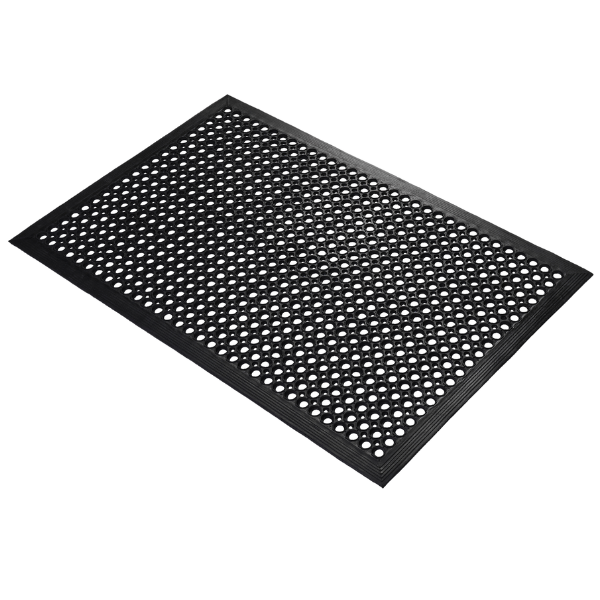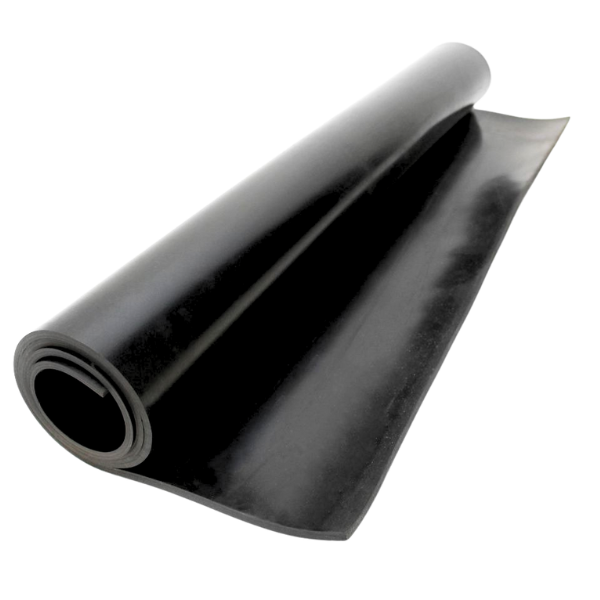Anti-fatigue mats are one of the best, most cost-effective ways of improving health and safety at your premises and boosting employee productivity and engagement. There are many different available, so...
Industrial Matting
Discover the benefits of industrial matting with our extensive range, designed to enhance safety and productivity in workshops, factories, and more. Made from robust materials like rubber and PVC, our high-quality industrial floor mats reduce slips, improve comfort, and ensure cleaner floors. Available with fast delivery, First Mats offers the perfect industrial matting for your workplace.
Best Sellers in Industrial Matting


Are you looking to enhance safety and productivity in your industrial workspace? Our range of industrial matting is designed to meet the demanding conditions of workshops, factories, warehouses, and more. Industrial matting is important and can bring many benefits to your business.
Industrial floor mats are used primarily in industrial environments such as workshops, factories, warehouses, assembly lines, and welding bays. Made from robust materials like rubber and PVC, industrial matting is built to withstand harsh conditions, ensuring durability and long-lasting performance.

The benefits of using industrial floor mats are numerous. They help reduce the risk of slips and trips, improve worker comfort, decrease injuries, maintain cleaner and safer floors, and boost productivity.
At First Mats, we offer an extensive range of high-quality industrial matting tailored to various applications, ensuring you find the perfect match for your needs. All our custom and standard safety mats are available with fast delivery across the UK.
What are the Advantages of Using Industrial Mats?
Correct use of industrial matting can benefit workers and employees alike. Industrial mats are primarily designed for safety by reducing discomfort for workers as well as the likelihood of injuries from occurring, but the advantages and benefits span further than this, including:
- Reduced risk of slips and trips
- Improved comfort for workers (Anti-Fatigue)
- Fewer injuries and accidents
- Cleaner and Safer floors
- Less downtime through accidents or cleaning
- Greater productivity and staff morale
- Better impression for visitors
- Protection of workbenches when using Self-Healing Cutting Mats
All employers have a legal duty of care for the safety of their workers and visitors, but using Industrial Mats can help you to meet those obligations and protect your workforce.
Another big advantage of using industrial matting is potential cost savings for the business. Many people think of equipment purchases as being an expense they'd rather not have, but the costs incurred through downtime or temporary staff due to injuries caused by not having relevant safety products in place can cost far more than a few mats. Therefore, Industrial Matting should be considered an investment for your business and those who work there daily.
Why Choose First Mats for your Industrial Matting?
As specialists in this field, First Mats boast an extensive and diverse range of industrial matting covering a wide range of uses and environments, ensuring that you will almost certainly be able to find the perfect mat from us.
At First Mats, we understand the importance of using high-quality matting in the workplace, so we only source our products from established and reputable manufacturers. Our industrial mats are tested to internationally recognised standards to ensure that safety and quality are not compromised.
- A large and diverse range
- Custom sized options
- Short delivery times for most products
- Competitively priced
- Free samples available
- Site visits are also available upon request
Join the growing number of organisations that have made First Mats their first choice for all types of industrial matting today.
Where is Industrial Matting Used?
Industrial Floor Mats have been designed to cover various environments such as dry areas, wet areas, oily floors and so on, making them flexible and adaptable to a wide range of areas, including:
Workshops
This includes machine shops that work with metals, wood and plastics, where slip hazards are plenty. Mats found in industrial workshops, such as our Swarf Catch Mat, are often designed to capture and retain swarf (machining debris) produced in these areas, stopping it from spreading to other floor areas.

Assembly and Production Lines
Workers in these areas often stand in one area for long periods of time, making them most at risk of health problems whilst doing their jobs. Anti-Fatigue mats, available in materials such as Rubber and High-Density Foams, can be used to help reduce the risk of injuries and long-term health problems for workers in these areas. See our DiamondFoam for individual work benches or DiamondTexture for longer runs on assembly lines.
Welding Bays
As with production line workers, professional welders spend most of their working day standing in one place, so they are at risk of health problems caused by fatigue. For these areas, industrial mats are designed to repel flames, such as our fire-resistant Weld-Diamond Anti-Fatigue Mat, which will help fight fatigue even in areas with hot sparks and naked flames.

Electrical Component Facilities
One of the problems uniquely found in facilities that produce electrical components is the risk of Electro-Static Discharge or ESD. This sudden discharge of electrical energy poses a risk to workers and the components themselves, but anti-static rubber mats can dissipate this energy. Browse our range of Anti-Static Matting or contact us for assistance.
Industrial Entrance Mats
Like all buildings, industrial areas should use matting at their entrances to keep floors cleaner for longer. Choose heavy-duty rubber-backed door mats for industrial settings, which will last much longer than vinyl-backed versions. Using outdoor rubber scraper mats can also help by stopping dirt and stones from entering the building.
Choosing the best Industrial Mats
With such a diverse range of industrial mats available, choosing the right one for you may seem daunting, so how do you know what to look for when selecting an industrial mat?
Rubber Grade
Many types of rubber matting are available. A standard mat made from natural rubber will be completely suitable for most areas, including wet areas. However, when there is oil or grease, a Nitrile mat should be used instead, as natural rubber is not compatible with these fluids, so lifespan would be compromised.
Type of Traffic
The suitability of an industrial mat also depends on the type of traffic that goes over it. For example, a mat with a foam centre provides excellent comfort for workers but will be crushed and damaged by wheeled traffic such as pallet trucks. If wheeled traffic is likely to roll over the mat, use a solid material such as a 100% rubber mat instead.
Area to cover
It is important to ensure that the mat used is large enough to perform as required. A standard 60cm x 90cm mat is suitable for individual workers, but larger mats will be required if multiple users operate at the workbench or production line. Swarf mats are also more effective when a larger area is covered as this will trap swarf that is flung further away from the machine.
Safety Border
All of our individual mats feature a bevelled edge, but the risk of tripping can be reduced further by using a mat with a yellow or striped safety border. There is no right or wrong situation for when these should be used as it is often just a case of what the on-site health and safety manager has specified.
For further advice and information about our industrial matting, please feel free to contact a member of our team who will be happy to help you with any enquiries you may have.
Further Reading for Industrial Matting
Rubber sheets are used in a broad spectrum of different industries, for an equally broad range of reasons. From gaskets and seals to shock absorption and anti-vibration padding, rubber is...
Anti-fatigue mats are ergonomic floor coverings that minimise fatigue from prolonged standing on hard surfaces. Made typically from rubber or specialised foam, these mats provide a softer surface to stand...
Rubber is one of the world's most versatile substances; you can find it everywhere, from tyres to mechanical seals, hosepipes to conveyor belts, windscreen wipers to wellies. It’s so widely...
ESD, or Electrostatic Discharge is the sudden release of static electricity that occurs when two objects come into contact. Examples include the shock you can experience when touching the metallic...
Rubber Matting is one of the most essential pieces of equipment a Kitchen can use to increase safety. Find out how Rubber Matting can boost safety and hygiene for you and...


































